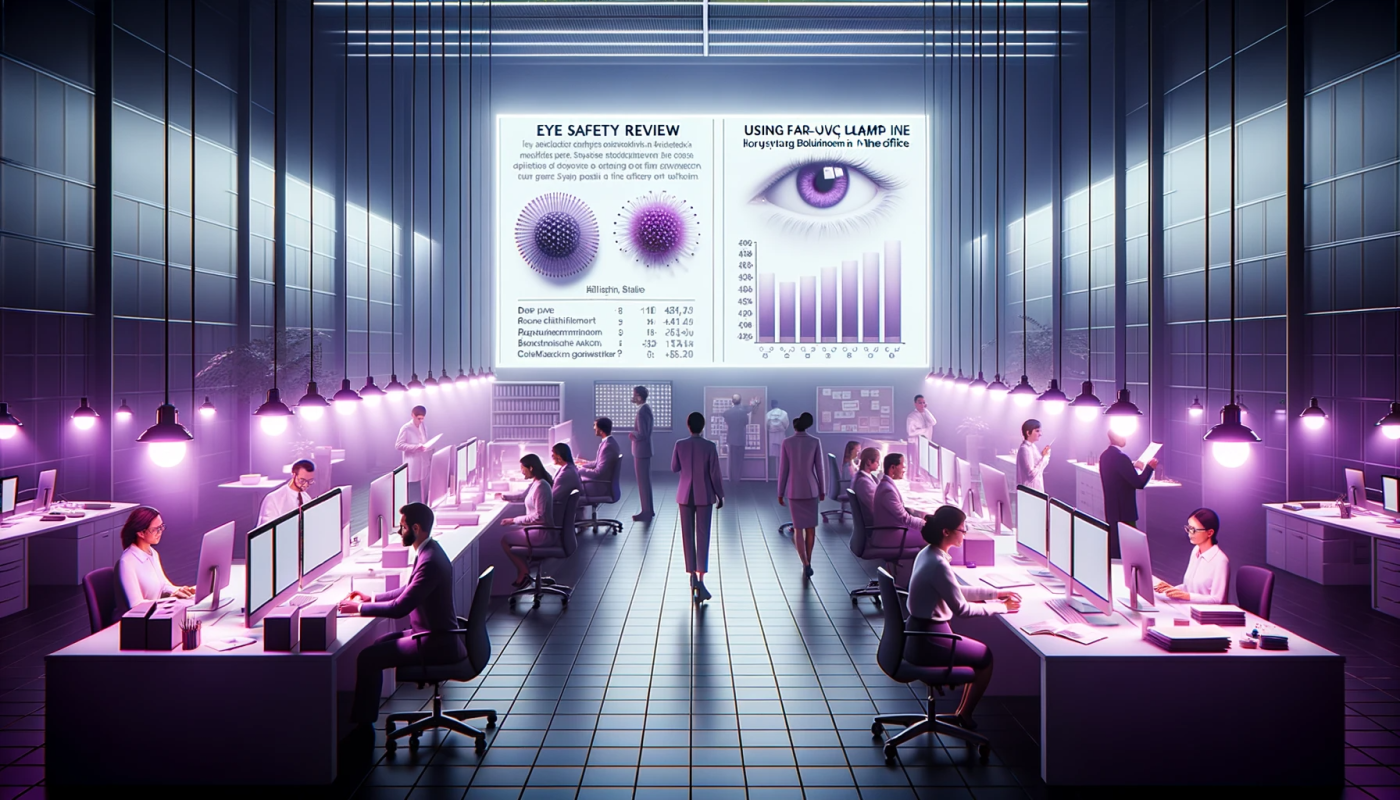Far-UVC Light, In the press, Latest Publications, News
Eye Safety Review: Using Far-UVC Lamps in the Office
The potential of Far-UVC light, specifically filtered through Krypton-Chloride lamps, to combat airborne diseases is gaining traction. Significant strides have been made to validate the skin safety of these lamps. However, a pivotal aspect that remains relatively under-explored is its impact on our eyes, especially when deployed in everyday settings like an office. A recent pilot study by Obaid Kousha and colleagues addresses this gap, shedding light on eye safety and comfort in a simulated office environment.
The Study in Brief
This pilot study was conducted in a controlled office setup where the Far-UVC emissions from Krypton-Chloride lamps were the focal point. One primary objective was to discern any immediate or delayed discomfort to the eyes. The researchers evaluated the discomfort immediately post-exposure and several days after using two standardized questionnaires – the Standard Patient Evaluation Eye Dryness (SPEED) and the Ocular Surface Disease Index (OSDI).
Key Findings:
- No Significant Discomfort: The deployment of Far-UVC, even with continuous operation of the lamps, did not result in any notable eye discomfort or adverse effects.
- Effective Pathogen Reduction: The setup, even though not optimized, led to a remarkable reduction in pathogens by 52%. This was verified through the collection of bacteria and fungi on agar plates.
- Relevance to Eye Health: Crucially, in this simulated office environment, the Far-UVC did not cause any clinically significant discomfort to the eyes.
Implications and Future Directions
The study provides encouraging results on two fronts: the efficacy of Far-UVC lamps in pathogen reduction and their safety concerning the human eye. For office goers and employers alike, these findings could have profound implications. It reassures that adopting this technology might not just ensure a more hygienic environment but also won’t compromise the comfort and well-being of those present.
However, as is the nature of pilot studies, it’s vital to proceed with cautious optimism. More extensive studies, across varied settings and larger population samples, will further cement these findings. Explorations into prolonged exposure effects, if any, would be beneficial.
Conclusion
As the world grapples with the challenge of ensuring safer indoor environments, technologies like the Far-UVC lamps present a beacon of hope. This study adds to the growing body of evidence suggesting that they can be effectively and safely integrated into everyday environments, like our offices. However, continuous research and monitoring will be essential to ensure that as we adopt newer technologies, we remain informed, safe, and comfortable.
For a more in-depth understanding of the study, consider reading the full article: Link to the full article. The study has now been published in Photochemistry and Photobiology.

